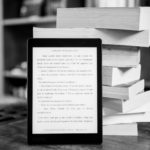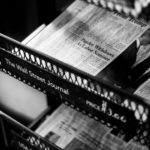What is a book blurb?
A blurb is the copy/text that appears on the back cover of a book. Your back-cover blurb is the second thing a potential buyer looks at after your front cover. You can write a ‘description blurb’ your book yourself (preferably in the third person) or have a ‘review blurb’ written by someone else in which praises for your book are mentioned.
Purpose
A strong, insightful blurb is one of the most important and powerful selling tools for your book because it serves as your sales pitch. Once your book’s title and cover have drawn the reader in, the blurb is what is going to make the difference between a missed opportunity and a sale. You have one shot at introducing your book to your reader ‒ make it count.
Many authors write the blurb as an afterthought, even though it is the single most important piece of writing you will do on your book! While the cover design creates interest, even intrigue, the blurb is what will convince readers to buy your book. A book blurb is there to entice a purchase, not demonstrate your writing skills; therefore, it should be short and to the point.
What makes a good book blurb?
Blurbs for non-fiction books are very different to those for fiction, in that they convey a message and the benefits the reader will receive from reading the book.
A non-fiction book blurb should give a quick indication of the credentials of the author, which readers it is written for and why they need it. A fiction book blurb, on the other hand, should convey atmosphere, specify its genre, and indicate what kind of book it is (mass-market or literary fiction). Quotes are extremely valuable to both fiction and non-fiction blurbs as they accurately describe the expectations the reader should have of the content.
It’s very important to match the words to the product. Do not make a romantic novel sound like classical literature: you will put off both potential markets. Try to use your genre keywords too – they’re great for SEO ‘findability’ and to help classify your book on the shelves.
10 Book Blurb Essentials
Blurbs for non-fiction books need to address the fact that the reader has turned to you, the author, for information rather than entertainment. Instead of creating suspense or drama in the blurb, you’ll want to reveal a little more about the content and its significance. Here’s how:
1. Determine your target market
Indicate who the book is for. This could be phrased as ‘For people who want…’, or it could describe the primary problem your target market has. Followed by what they’ll get from the content, or how you will help them solve the problem and why they should make buy your book and read it now. Keep this concise.
Its highly likely that any subject you’ve written about has already been covered by other authors, so you’ll want to look at similar books and their blurbs. Where does your book fit in? What’s unique about you? What’s your story? How do you differentiate your book? Perhaps you can identify a niche market or highlight a unique perspective that you bring to the content.
Is there a hook you can use that will attract readers in a particular niche market? Naturally, others will read (and hopefully) love your book too. But the readers who will feel that you really ‘get them’ will be those who can sympathise, empathise, admire or identify with you. Your blurb will persuade them to pick up your book, read it and recommend it to others ‒ if it lives up to expectations.
2. Make your opening line count
First impressions count. And when writing a blurb, your opening line is your first impression. Short, pithy, surprising sentences or valuable information will grab the reader’s attention. And it’s not a bad idea to lead with the most outrageous claim, alarming insight, startling reveal, etc. that you have. It’s not suggesting you make something up or be deceptive, but a clever use of words to create a need-to-know urgency in your reader never hurts.
3. Sell the benefits
Why should someone read your book? What’s in it for them? What will they learn? How will it change them? These are just some of the questions that you can answer by stating the benefits of reading your book. For the most part, non-fiction is about learning, teaching and training to varying degrees. Approach the copy of your back-cover blurb with the mindset of ‘what’s in it for the reader’.
You could structure sentences along the lines of, ‘What you’ll learn when you read this book:’ or ‘When you’ve read this book, you will know/understand/be able to:’ then follow this with three to five bullet points of benefits of the content. This is your chance to make your promises about the value the book will deliver and paraphrase the best bits from your Table of Contents to entice the reader.
4. Showcase your knowledge
Offer some of your insight and learnings in your blurb. Don’t give it all away, but you do need to show your authority and relevant experience to build credibility. Demonstrate that you know something valuable which will help your readers. Mention something significant about the content that makes the book worth picking up, promising that there will be more of that useful information inside.
5. Write in your own voice
This is paramount. Your blurb should be written in the same voice as your book. It might sound obvious, but so many writers don’t do this. A potential reader looks at the blurb the same way they would look at the book itself. In a non-fiction book, you are selling your knowledge, your experience, your writing and yourself, so if the blurb doesn’t represent the typical language you use in your book, the reader will feel a disconnect. Besides, it will only make your words more authentic and impactful.
6. Keep it short
Most blurbs are only between 100 and 150 words long, excluding the author biography. Keep your blurb within these limits if you want it to make an impact. Your last sentence should wrap it up – essentially coming full circle back to the first sentence. You can use bullet points and questions. The book blurb should arouse curiosity, rather than provide answers. You want them to think ‘That’s what I need to know!’ or ‘That sounds just like me …’
7. Use a cliffhanger
The aim of your blurb is to leave readers curious and wanting more ‒ so much so that they would actually buy the book. For non-fiction books, your cliffhanger should promise a strategy or a solution to address a problem the reader has, or a situation they want to understand, or information that they are seeking, and so on.
8. Get testimonials or endorsements
Endorsements are a powerful way for you and your book to have credibility and ‘social proof’, making your book more appealing to potential buyers. Powerful endorsements or testimonials from notable, credible people in your related field is the goal.
The praise on your book cover should make it very clear, in one brief sentence (include a maximum of three short quotes), why someone should read your book. The quote should be from someone whose name the reader recognises or whose title shows they know what they’re talking about ‒ if not, it might be ineffective. Acquiring testimonials and endorsements is something you’ll need to start working on early, often before you’ve finished writing your book.
9. Author biography
Keep this short and focused on why you, the author, are uniquely qualified to write this book and what motivated you to do it. Three sentences should cover it (you can put a longer Author Biography inside your book). List your key credentials and qualifications but don’t write a CV or present irrelevant details – align this with the tone and subject matter of the content. Readers want to know the person offering the information they’re spending their time and money on, is genuine.
10. Author photo
A professionally photographed headshot of you adds character and illustration to all the words on your back cover; it also helps your readers connect with you. It can be in colour or black and white, but should show you looking friendly, likeable, approachable and trustworthy.
Final Words
Make sure these elements are concise and well laid out (a back cover that is covered in text with not enough ‘white space’ is unappealing to the reader) and your back cover will be doing a great job selling your non-fiction book. Your book blurb can also be used in pitch letters to reviewers and journalists, and as background information for anyone wishing to interview you about your book. The book blurb is an important communication aid when promoting your book, so invest plenty of time and effort to ensure you get it right.











